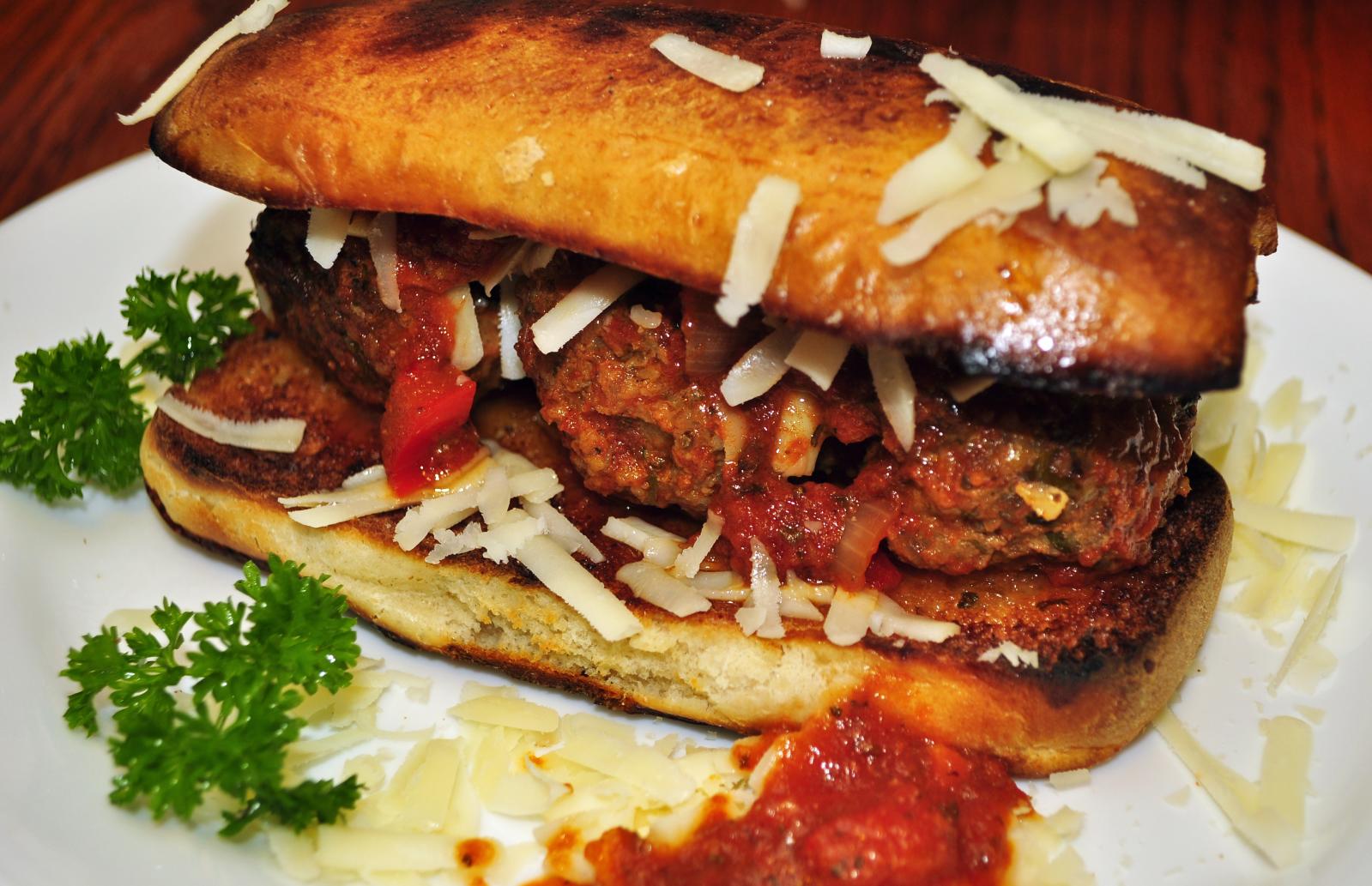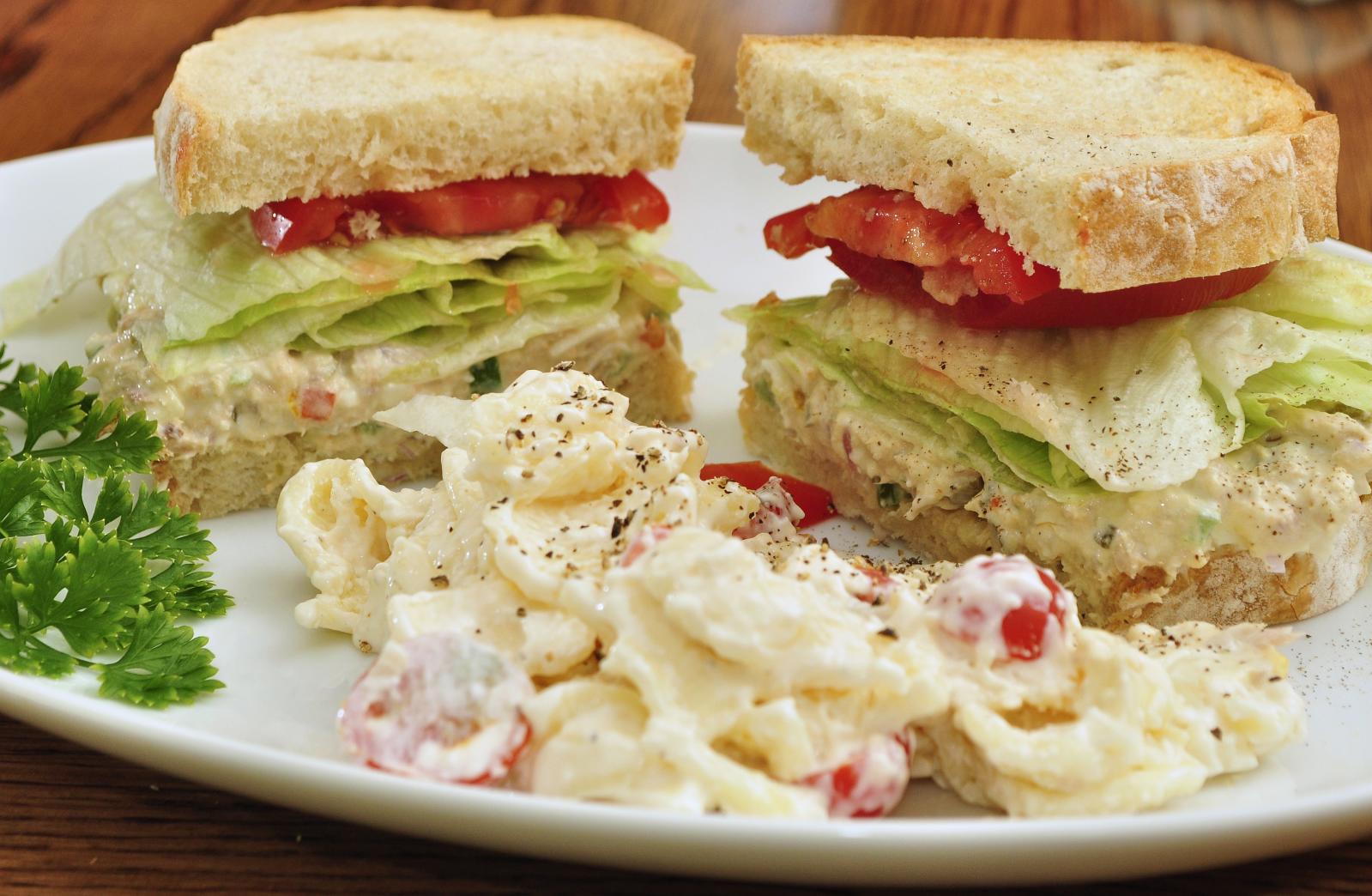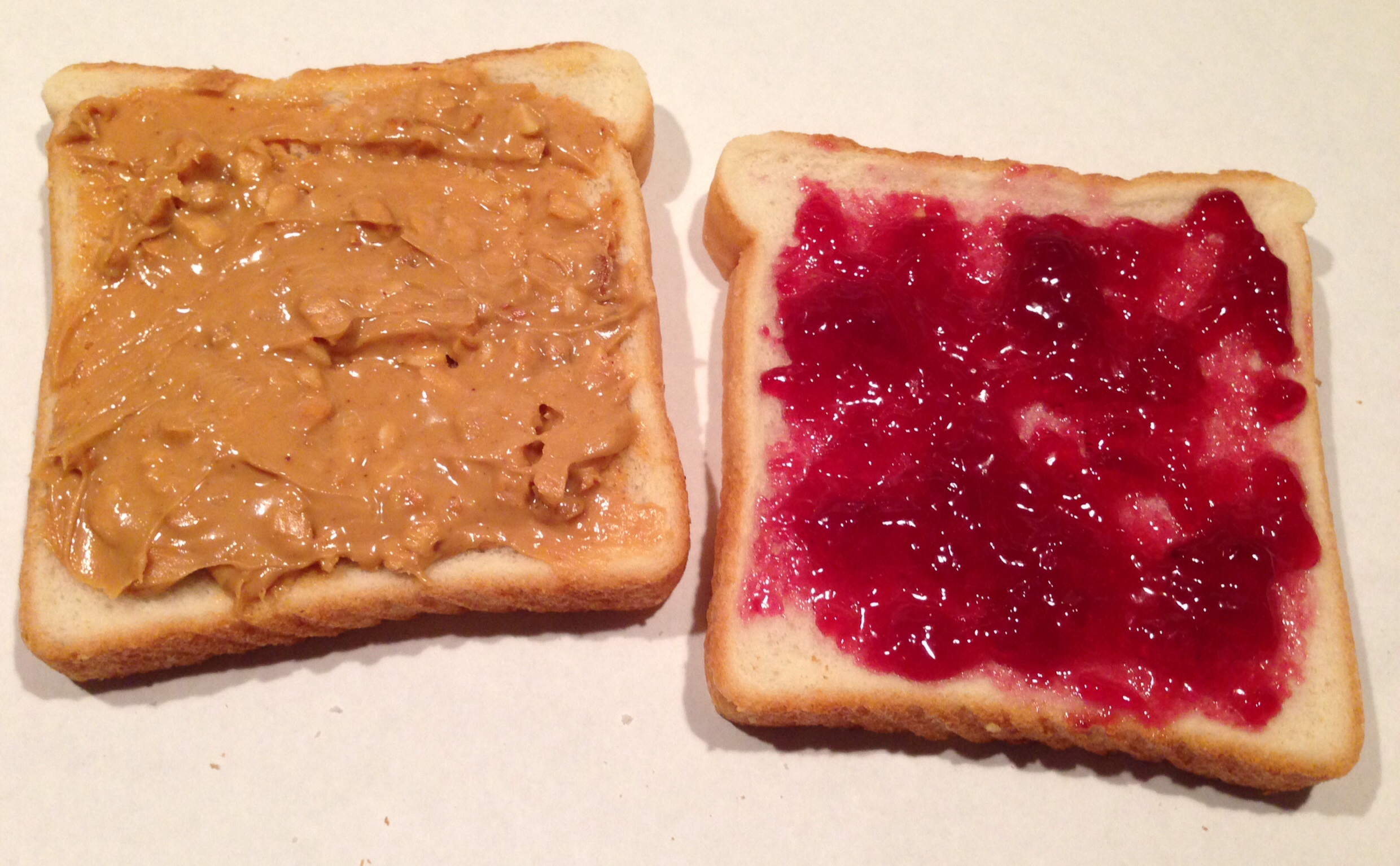Why Do Americans Love Sandwiches So Much?
I have figured it out, folks. I have figured out how to get my husband to eat anything I make. The other night I made some very saucy beef rigatoni in the Instant Pot with a side of perfect garlic bread and green beans. We sat down at the table and while my kids excitedly gobbled their meal in what felt like seconds, I sat patiently, eagerly awaiting the familiar sound I have grown accustomed to: the perfect crunch of my husband biting into his “meatball sub”. By always having a side of crusty, perfect garlic bread I have created a vehicle to make any mediocre meal into a five-star meal or with the help of a couple slices of bread.

My husband is the ultimate sandwich man through and through and I have learned that I can get him to eat and love virtually anything I make if it is “sandwich-able”. The ultimate “bread” for your sandwich is actually my favorite garlic bread seasoning sprinkled on very generously buttered, sliced sourdough bread. I bake it in the oven for about 5 to 7 minutes at 400 degrees F until it is toasted and golden. With this garlic bread, it is sturdy and can make sandwiches out of anything from chicken parmesan, spaghetti and meatballs, chicken piccata, to roast beef with potatoes and gravy. You can turn almost anything into a sandwich--believe me, I’ve done it :)
It does seem that loving a good sandwich is a pretty standard American trait. We have a long history of putting anything and everything between two slices of bread. Let’s take a closer look at two of the most common sandwiches Americans love and learn a little bit about each.

Tuna Sandwich. Tuna sandwiches ultimately stemmed from Americans living in the 19th century. These people lived before supermarkets and cheap groceries so they didn’t want to waste anything. If they had any leftover scraps of chicken, ham or fish from dinner, they would often dice it up and mix in some mayo and serve it over lettuce for lunch the next day. If they had any leftover celery, pickles or olives, those would be thrown into the mix as well.
Around the end of the 19th century, women tended to be out and about more, visiting department stores or visiting museums. Social conventions kept these women from eating lunch at saloons like men, so lunch restaurants soon opened up to feed this new clientele. They offered the women the same food they would be eating at home: salads. But instead of scraps and leftovers, these salads were made from scratch and shellfish salads were the most common.
Fast forward a bit later when women were in the workplace and lunch breaks were short--they had to think of a way to eat a lot faster and began offering the salads between two pieces of bread, which sped up lunch table turnover and encouraged patrons to get their food to go.
Canned tuna was introduced in the early 20th century and home lunch makers and lunch counters at work could skip the step of cooking the fish and jump straight to making the salad. Canned tuna was a game changer.

Peanut Butter and Jelly Sandwich. Peanut Butter sandwiches came about in the late-19th century, at elegant ladies’ luncheons, where they would normally have tiny crustless sandwiches with butter and cucumber, cold cuts or cheese. Health food advocate John Harvey Kellogg was trying to promote replacements for animal-based foods at this time, so he recommended using a peanut paste to replace butter. So peanut butter replaced regular butter for these lunch parties.
The first time jelly was mentioned with peanut butter was from a 1901 issue of the Boston Cooking School Magazine. Author Julia Davis Chandler said, “For variety, some day try making little sandwiches, or bread fingers, of three very thin layers of bread and two of filling, one of peanut paste, whatever brand you prefer, and currant or crabapple jelly for the other. The combination is delicious, and so far as I know, original.”
The sandwich went from fancy garden parties to worker lunchboxes in the 1920’s when Skippy started mass-producing peanut butter by adding sugar and hydrogenated vegetable oil. Marketers from Skippy started targeting children as a potential new audience, and the rest is history.
Did you know that most people from around the world find the idea of the combination of peanut butter and jelly to be quite repulsive? That is so funny to me--it is such a staple in American diets that I can’t believe anyone wouldn’t love the idea of a classic PB&J!
What are a couple of your favorite sandwiches? Do you like to make things into sandwiches that aren’t normally? Please share your thoughts in the comments below.

My husband is the ultimate sandwich man through and through and I have learned that I can get him to eat and love virtually anything I make if it is “sandwich-able”. The ultimate “bread” for your sandwich is actually my favorite garlic bread seasoning sprinkled on very generously buttered, sliced sourdough bread. I bake it in the oven for about 5 to 7 minutes at 400 degrees F until it is toasted and golden. With this garlic bread, it is sturdy and can make sandwiches out of anything from chicken parmesan, spaghetti and meatballs, chicken piccata, to roast beef with potatoes and gravy. You can turn almost anything into a sandwich--believe me, I’ve done it :)
It does seem that loving a good sandwich is a pretty standard American trait. We have a long history of putting anything and everything between two slices of bread. Let’s take a closer look at two of the most common sandwiches Americans love and learn a little bit about each.

Tuna Sandwich. Tuna sandwiches ultimately stemmed from Americans living in the 19th century. These people lived before supermarkets and cheap groceries so they didn’t want to waste anything. If they had any leftover scraps of chicken, ham or fish from dinner, they would often dice it up and mix in some mayo and serve it over lettuce for lunch the next day. If they had any leftover celery, pickles or olives, those would be thrown into the mix as well.
Around the end of the 19th century, women tended to be out and about more, visiting department stores or visiting museums. Social conventions kept these women from eating lunch at saloons like men, so lunch restaurants soon opened up to feed this new clientele. They offered the women the same food they would be eating at home: salads. But instead of scraps and leftovers, these salads were made from scratch and shellfish salads were the most common.
Fast forward a bit later when women were in the workplace and lunch breaks were short--they had to think of a way to eat a lot faster and began offering the salads between two pieces of bread, which sped up lunch table turnover and encouraged patrons to get their food to go.
Canned tuna was introduced in the early 20th century and home lunch makers and lunch counters at work could skip the step of cooking the fish and jump straight to making the salad. Canned tuna was a game changer.

Peanut Butter and Jelly Sandwich. Peanut Butter sandwiches came about in the late-19th century, at elegant ladies’ luncheons, where they would normally have tiny crustless sandwiches with butter and cucumber, cold cuts or cheese. Health food advocate John Harvey Kellogg was trying to promote replacements for animal-based foods at this time, so he recommended using a peanut paste to replace butter. So peanut butter replaced regular butter for these lunch parties.
The first time jelly was mentioned with peanut butter was from a 1901 issue of the Boston Cooking School Magazine. Author Julia Davis Chandler said, “For variety, some day try making little sandwiches, or bread fingers, of three very thin layers of bread and two of filling, one of peanut paste, whatever brand you prefer, and currant or crabapple jelly for the other. The combination is delicious, and so far as I know, original.”
The sandwich went from fancy garden parties to worker lunchboxes in the 1920’s when Skippy started mass-producing peanut butter by adding sugar and hydrogenated vegetable oil. Marketers from Skippy started targeting children as a potential new audience, and the rest is history.
Did you know that most people from around the world find the idea of the combination of peanut butter and jelly to be quite repulsive? That is so funny to me--it is such a staple in American diets that I can’t believe anyone wouldn’t love the idea of a classic PB&J!
What are a couple of your favorite sandwiches? Do you like to make things into sandwiches that aren’t normally? Please share your thoughts in the comments below.
Sources:
blog comments powered by Disqus
- www.commons.wikimedia.org
- www.wikipedia.org
- www.newsweek.com
 Mary Richardson
Mary Richardson
Weekly Newsletter Contributor since 2014
Email the author! mary@dvo.com
